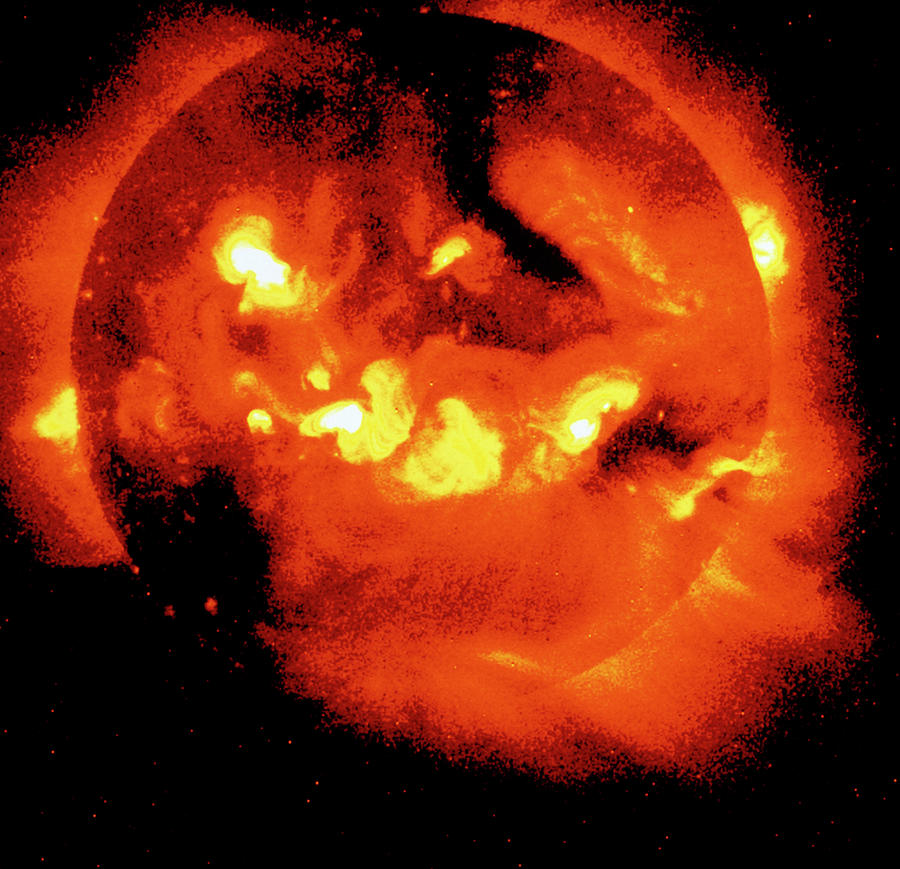

However, scientists believe that this is merely one of several ways in which the corona is heated. The heat bombs burst in the corona, releasing their energy as heat. The expedition detected "heat bombs," which are packets of extremely hot material that flow from the Sun into the corona. One conceivable solution might have come from a NASA project named IRIS. The corona, on the other hand, is hundreds of times hotter than the Sun's surface. The corona is located in the Sun's outer atmosphere, far from its surface. For a long time, astronomers have been attempting to answer this puzzle. This appears to be the reverse of what appears to occur on the Sun. However, as you move away from the fire, you feel a lot better. Assume you're sitting close to a bonfire. The high temperatures of the corona are a bit of a mystery. Reason for the Hotness of the Corona of the Sun The corona may also be observed under non-eclipse conditions using a coronagraph, which is a specialised telescopic equipment. During a total solar eclipse, the Moon blocks out the light from the photosphere, allowing for naked-eye observations of the corona and this is one of the major effects of solar eclipse on corona.

The corona radiates only about half as brilliantly as the Moon and is generally invisible to the naked eye due to the brilliance of the solar surface. Despite its high temperature, the corona generates very little heat due to its low density that is, the component gas molecules are so sparse that the energy content per cubic centimetre is significantly less than that of the Sun's core. The solar wind, which sweeps radially outward through the whole solar system, is created by coronal gas expansion and only reaches the heliopause. As a result of the Sun's magnetic field, the corona's size and form change all the time. It has a temperature of around two million kelvins and a very low density. The corona is the outermost portion of the Sun's atmosphere, made mostly of plasma (hot ionised gas). In this post, we'll look at what coronal meaning is, how solar eclipses affect the corona and solar wind. The eclipsed Sun is then surrounded by a dazzling white corona. When this occurs, the moon conceals the Sun's strong brightness. The moon passes between the Earth and the Sun during a complete solar eclipse. The corona, on the other hand, may be observed during a total solar eclipse. This makes it impossible to see without the use of specialised equipment. The brilliant brightness of the Sun's surface frequently obscures the corona. The corona is the Sun's atmosphere's outermost layer. These speeds are so high that the particles can escape the Sun's gravity.Ĭonceptual animation (not to scale) showing the Sun's corona and solar wind.Our Sun is surrounded by an atmosphere, which is a layer of gases. The corona's temperature causes its particles to move at very high speeds. From it comes the solar wind that travels through our solar system. We can view these features in detail with special telescopes. These include streamers, loops, and plumes. The Sun's magnetic fields affect charged particles in the corona to form beautiful features. This is the force that makes magnets stick to metal, like the door of your refrigerator. The surface of the Sun is covered in magnetic fields. But astronomers think that this is only one of many ways in which the corona is heated. In the corona, the heat bombs explode and release their energy as heat. The mission discovered packets of very hot material called "heat bombs" that travel from the Sun into the corona. Yet the corona is hundreds of times hotter than the Sun’s surface.Ī NASA mission called IRIS may have provided one possible answer. The corona is in the outer layer of the Sun’s atmosphere-far from its surface. This is the opposite of what seems to happen on the Sun.Īstronomers have been trying to solve this mystery for a long time. But when you walk away from the fire, you feel cooler. Imagine that you’re sitting next to a campfire. The corona’s high temperatures are a bit of a mystery. Image of corona from NASA's Solar Dynamics Observatory showing features created by magnetic fields. This low density makes the corona much less bright than the surface of the Sun. Why? The corona is about 10 million times less dense than the Sun’s surface. The corona reaches extremely high temperatures.
#Sun corona experiment how to
Find tips on how to safely view an eclipse here. Remember to never look directly at the Sun, even during an eclipse.


 0 kommentar(er)
0 kommentar(er)
